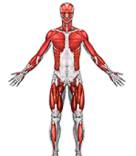|
from The Worldview Literacy Book copyright 2009 back to worldview theme(s) #28 |
| Discussion #28A: Displayed just below the "Hedonist
International" web-site's banner is the phrase "Do what you
want!" This group's
call for people to exercise total freedom is followed by a list
of what these extroverted hedonists want: "joyful togetherness,
anarchy, epicurean ideas, multifaceted joy, sensuality, diversion,
friendship, justice, tolerance, freedom, sexual freedom, sustainability,
peace, free access to information, the arts, a cosmopolitan existence, a
world without borders or discrimination, and everything else that is
wonderful but not a reality today." Added to this later is the dream of achieving "a world
where highly developed technologies allow all human beings to live free
of the necessity to work." Ah--a
life full of pleasure!
While it's fun to fantasize about a world full of such things,
such a fantasy ignores certain hard realities: 1) freedom is not
free—serious discussion of types of freedom must necessarily involve
their opposites: types of restraint, 2) in seeking to create a wonderful
world, a utopia, the balance one strikes between allowing freedom and
designing in restraints depends on one's values and worldview, and 3)
things which bring some people pleasure can directly or indirectly bring
other people (even the same people, but at different times) pain.
We could use any one of several items in the above "wish
lists" and counter simplistic, narrow imaginings of associated
pleasures with examples of painful realities from these three areas.
Let us pick sexual freedom.
After a pleasant fantasy involving free love, multiple partners,
orgies, a minimum of emotional entanglement & commitment, maximum
sensual enjoyment, another side would emerge: shallowness, mechanical
performance devoid of meaning, human nature where jealousy and
possessiveness are nearly universal, accusations of using people and/or
cheating, side effects of contraceptive technologies, sexually
transmitted diseases, pregnancy, abortion, the pain of childbirth or
raising an unwanted child, etc.
The lesson here is: before being seduced by the "Hedonistic
Orientation," weigh its advantages against those of its antithesis
—"The Self Restrained Person" (theme #29A). The extent of
discounting the future and trading later consequences
for |
Discussion—continued for
immediate pleasure must be considered.
So must human nature: one suspects jealousy defeats polyamory
(Figure #28c)! #28B: Rather than maximizing the (perhaps shorter term)
sensory enjoyment derived from one's body, those who opt for the
"Healthy Orientation" aim to take care of their bodies and
maximize the enjoyment it ultimately gives them over the (hopefully)
long haul. (See Figure #28a
for an overview of the body.) They
do this by practicing self-restraint and what preventive medicine
suggests: 1) eat healthy, nutritional food: a)
eat a variety of foods, more natural foods, less processed ones; b) eat
plenty of grains, vegetables, and fruits; c) keep intake of saturated
fat and cholesterol low, avoid trans fatty acids, and minimize red meat
consumed; d) keep consumption of sugar, salt and sodium low; e) drink
alcohol only in moderation; 2) exercise regularly and avoid gaining
weight: a) keeping calories consumed vs. calories burned equal maintains
one’s weight (see Figure #28b); b)
doing this reduces chances of getting diabetes, cardiovascular disease,
and perhaps certain cancers; 3)
don't smoke: this has general health benefits as well as benefits both
in lessening one's chances of getting certain types of cancer, and in
preventing cardiovascular disease; 4) avoid environment-al factors known
or suspected to cause cancer—
including ionizing radiation, chemical compounds, pesticides, certain
viruses, etc; 5) if you're
young, be alert for—and avoid— impulsive, risky behavior; as you age
avoid high stress life-styles; 6)
have regular medical checkups—especially if over age forty—and watch
blood pressure, lipids / cholesterol, blood sugar, unusual looking moles
on the skin, etc. While wholistic
health practitioners have long recognized that poor mental health can
lead to poor physical health, increasingly traditional practitioners of
Western medicine are realizing it as well.
Studies have linked being upbeat, feeling loved, or having
expectations, to maintaining or regaining physical health.
In this regard embracing certain worldview themes—including
"Belief in a Personal God," "Gratitude &
Forgiveness," "Valuing Family," (themes #8B, #17B, and
#38, respectively) and perhaps others may be important. |
|

